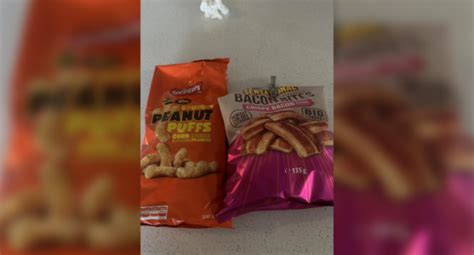
Sometimes, despite best efforts, things just don’t go as planned. A collection of online images showcases humorous mishaps and valiant attempts that, while falling short of success, earned a sympathetic “You Tried” sticker. These range from construction blunders to baking fails and DIY disasters, highlighting the humor in everyday imperfections.
Online users are sharing images of epic failures that, despite their shortcomings, demonstrate effort and a good-natured spirit, often worthy of the internet’s ironic “You Tried” award. The images, compiled from various social media platforms, showcase situations where individuals attempted a task with enthusiasm but ultimately missed the mark in a comical way.
The collection encompasses a wide array of scenarios. One featured image shows a poorly constructed set of stairs that leads directly into a wall, exemplifying a planning failure in home improvement. Another depicts a cake with a frosting design gone awry, a testament to the challenges of culinary artistry. Several involve attempts at shortcuts or repairs that backfired spectacularly, resulting in more damage or confusion.
The “You Tried” sentiment resonates because it acknowledges the effort involved, even in the face of failure. It’s a lighthearted way to recognize that not everything goes according to plan and that sometimes the attempt itself is worth celebrating. The online community has embraced this concept, using it as a form of encouragement and shared amusement.
These images also underscore the relatability of everyday struggles. Many viewers can identify with the situations depicted, having experienced similar mishaps in their own lives. This shared experience fosters a sense of community and provides a humorous outlet for dealing with imperfections. The internet’s fascination with these failures speaks to a broader appreciation for authenticity and the acceptance of mistakes as a part of the human experience.
One image presents a parking attempt gone terribly wrong, with a car precariously perched on a curb. In another, a DIY project results in a tangled mess of materials and instructions. There’s also a photo of a failed attempt to recreate a professional photograph, with the end result bearing little resemblance to the original.
According to social media trends, the “You Tried” meme has become a popular way to acknowledge effort and humor in everyday failures. The trend encourages individuals to share their own mishaps and celebrate the attempts, regardless of the outcome. It represents a shift towards a more forgiving and lighthearted approach to mistakes, promoting a culture of learning and growth.
The collection serves as a reminder that perfection is not always attainable or necessary. It celebrates the human spirit of perseverance and the ability to find humor in the face of adversity. The images offer a momentary escape from the pressures of perfectionism and a reminder to embrace the imperfections that make life interesting.
The “You Tried” label, in this context, is not meant as a form of mockery, but rather as a gesture of encouragement and recognition. It acknowledges that the individuals involved put forth effort and attempted to achieve a goal, even if they ultimately fell short. This positive framing of failure can be beneficial in promoting resilience and a willingness to try again.
Several of the showcased images highlight the importance of planning and preparation. In many cases, the failures could have been avoided with better forethought and attention to detail. However, they also serve as a reminder that even with careful planning, unforeseen circumstances can arise, leading to unexpected outcomes.
The online response to these images has been overwhelmingly positive. Viewers have expressed amusement, empathy, and admiration for the individuals who dared to try and shared their failures with the world. The comments sections are filled with anecdotes of similar experiences and messages of support.
The trend of sharing these types of images reflects a broader cultural shift towards embracing vulnerability and authenticity. In a world often dominated by curated images of perfection, these glimpses of everyday failures provide a refreshing dose of reality. They remind us that everyone makes mistakes and that it’s okay to laugh at ourselves along the way.
One recurring theme in the collection is the contrast between expectation and reality. In many cases, the individuals involved had a clear vision of what they wanted to achieve, but the execution fell far short of their aspirations. This discrepancy between intent and outcome is often the source of the humor.
Another interesting aspect of the “You Tried” phenomenon is its ability to connect people from different backgrounds and cultures. Despite variations in language and customs, the experience of failure is universal. These images resonate with viewers around the world, fostering a sense of shared humanity.
The collection also highlights the importance of learning from mistakes. While the failures themselves may be humorous, they can also provide valuable lessons about what not to do in the future. By sharing these experiences, individuals can help others avoid similar pitfalls.
The rise of social media has played a significant role in the popularity of the “You Tried” meme. Platforms like Twitter, Instagram, and Reddit provide a space for individuals to share their failures with a wide audience and receive instant feedback. This immediate gratification encourages further participation and perpetuates the trend.
The “You Tried” sticker, often awarded ironically, has become a symbol of recognition for effort and good intentions, even in the face of comical failure. It’s a digital pat on the back, acknowledging the attempt and offering a lighthearted form of encouragement. The Yahoo article showcases numerous examples where this sentiment applies perfectly.
Several images detail construction mishaps, like a staircase leading directly into a wall, or doors installed upside down. These errors highlight the importance of careful planning and execution in building projects. Culinary catastrophes are also well-represented, with cakes decorated with sloppy frosting or meals that simply didn’t turn out as expected. These failures emphasize the challenges of cooking and baking.
DIY projects gone wrong are another common theme. These include attempts to fix or improve something around the house that resulted in further damage or a less functional outcome. Such examples serve as cautionary tales about the potential pitfalls of taking on projects without the necessary skills or knowledge.
The article also touches upon the relatability of these failures. Many people have experienced similar mishaps in their own lives, making these images all the more amusing and engaging. They offer a reminder that everyone makes mistakes and that it’s okay to laugh at ourselves along the way.
The “You Tried” sticker, in this context, is not meant to be demeaning or condescending. Instead, it’s a way of acknowledging the effort and intention behind the attempt, even if the outcome wasn’t ideal. It’s a lighthearted way to encourage people to keep trying and not be discouraged by setbacks.
The popularity of the “You Tried” meme reflects a broader cultural shift towards embracing imperfection and celebrating the human spirit of resilience. In a world that often emphasizes success and achievement, these images offer a refreshing reminder that it’s okay to fail and that there’s value in the attempt itself.
The examples in the article also illustrate the importance of learning from mistakes. Each failure provides an opportunity to identify what went wrong and to improve our skills and knowledge for future endeavors. By sharing these experiences, we can help others avoid similar pitfalls and foster a culture of continuous learning.
The article also highlights the role of humor in coping with failure. By finding the humor in our mistakes, we can reduce stress and anxiety and maintain a positive attitude. This can make it easier to bounce back from setbacks and continue pursuing our goals.
The use of the “You Tried” sticker also acknowledges the emotional aspect of failure. It recognizes that it can be disappointing or frustrating to put effort into something and not achieve the desired outcome. The sticker offers a form of validation and support, reminding us that our efforts are appreciated even if they didn’t lead to success.
Ultimately, the “You Tried” meme is a celebration of human fallibility and resilience. It acknowledges that mistakes are a natural part of life and that we can learn and grow from them. By embracing our imperfections and finding humor in our failures, we can develop a more positive and resilient attitude towards life’s challenges.
The article also points out the universality of these experiences. People from all walks of life can relate to the feeling of trying something and failing, whether it’s a small everyday task or a major project. This shared experience creates a sense of connection and camaraderie, reminding us that we’re not alone in our struggles.
The “You Tried” sentiment can also be seen as a form of self-compassion. It encourages us to be kind and forgiving to ourselves when we make mistakes, rather than being overly critical or self-deprecating. This can help us maintain a positive self-image and avoid getting discouraged by setbacks.
The Yahoo article emphasizes that the “You Tried” sticker is a recognition of effort, not an assessment of competence. It acknowledges that the person attempted something, even if the result wasn’t perfect. This is particularly important in situations where people are trying new things or pushing themselves outside of their comfort zones.
The shared images exemplify that even experienced individuals encounter unforeseen difficulties. The unpredictable nature of reality often leads to unexpected outcomes, underscoring the idea that meticulous planning doesn’t guarantee success but enhances the chances of it.
Many images depict failed attempts at replicating complex designs or intricate procedures. This highlights the importance of acknowledging one’s skill limitations and pursuing realistic goals. Attempting projects beyond one’s capabilities can often result in frustration and less-than-desirable outcomes.
The frequent appearances of DIY project failures emphasize that seemingly simple tasks can become complex. Overestimating one’s abilities and underestimating the project’s difficulty are common pitfalls that often lead to amusing, albeit unsuccessful, results.
The collection of images underscores the importance of patience and perseverance in achieving goals. While some attempts may result in failure, learning from these experiences and continuing to try can ultimately lead to success. The “You Tried” sticker can serve as a temporary badge of honor, encouraging individuals to keep pushing forward.
Ultimately, the article communicates a message of encouragement and acceptance. It celebrates the human spirit of trying, even when faced with potential failure. The “You Tried” sticker is a symbol of recognition for effort and a reminder that it’s okay to make mistakes, as long as we learn from them and keep trying.
The article’s tone remains lighthearted, focusing on the humor and relatability of the shared images. It avoids being judgmental or critical, instead opting for a supportive and encouraging approach. This contributes to the overall positive and uplifting message of the piece.
The selection of images curated by the Yahoo article also exemplifies the diversity of potential failure points. From structural mishaps to artistic misinterpretations, the array of situations underscores that failure can occur in any domain of human activity.
The article subtly promotes a growth mindset, encouraging readers to view failures as opportunities for learning and improvement. This is a valuable message, as it can help people develop resilience and overcome challenges more effectively.
The “You Tried” sticker, therefore, becomes more than just a humorous label; it symbolizes a culture of encouragement, acceptance, and continuous improvement. It represents a shift away from the pursuit of perfection and towards the celebration of effort and progress.
The widespread appeal of these “You Tried” moments can also be attributed to their authenticity. In an age of carefully curated social media profiles, these glimpses of genuine, unscripted failures offer a refreshing dose of reality. They remind us that everyone struggles and that it’s okay to show our imperfections.
The consistent theme throughout the article is that failure is not the opposite of success; it’s a stepping stone towards it. Each attempt, regardless of the outcome, provides valuable experience and insights that can be used to improve future endeavors.
The “You Tried” meme also taps into our inherent desire for connection and community. By sharing our failures, we create opportunities for others to relate to our experiences and offer support. This can help us feel less alone in our struggles and more connected to the human experience.
The article also implicitly addresses the fear of failure. By showcasing humorous examples of failed attempts, it helps to normalize the experience and reduce the stigma associated with it. This can encourage people to take more risks and pursue their goals without being held back by fear.
Ultimately, the Yahoo article uses the “You Tried” meme as a vehicle for promoting a more positive and empowering perspective on failure. It encourages readers to embrace their imperfections, learn from their mistakes, and keep trying, even when faced with setbacks. This is a valuable message that can help people live more fulfilling and successful lives.
Frequently Asked Questions (FAQs)
1. What is the “You Tried” meme and what does it represent?
The “You Tried” meme is an internet trend where people share images and stories of their humorous failures or valiant attempts that didn’t quite succeed. The phrase “You Tried” is often used ironically to acknowledge the effort put into the attempt, even if the outcome wasn’t ideal. It represents a lighthearted and encouraging approach to mistakes and imperfections, celebrating the effort and resilience of individuals.
2. What types of failures are typically featured in “You Tried” compilations?
“You Tried” compilations often feature a wide range of failures, including construction blunders (e.g., stairs leading into a wall), culinary catastrophes (e.g., poorly decorated cakes), DIY project disasters (e.g., tangled messes of materials), parking mishaps, and attempts to recreate professional photographs that fall hilariously short of the mark. The common thread is that the failures are relatable, humorous, and demonstrate effort, even if the execution was flawed.
3. Why has the “You Tried” meme become so popular online?
The “You Tried” meme has gained popularity due to its relatability and the positive message it conveys. In a world often dominated by curated images of perfection, these glimpses of everyday failures provide a refreshing dose of reality. People can identify with the struggles depicted and find humor in the imperfections, creating a sense of connection and shared experience. The meme also promotes a forgiving and lighthearted approach to mistakes, encouraging individuals to learn from their failures and keep trying.
4. Is the “You Tried” sticker meant to be demeaning or sarcastic?
While the “You Tried” sticker can be used sarcastically in some contexts, its use in these compilations is generally intended to be encouraging and supportive. It’s a way of acknowledging the effort and intention behind the attempt, even if the outcome wasn’t perfect. It’s a lighthearted pat on the back that recognizes the human spirit of perseverance and the ability to find humor in adversity. It emphasizes that the effort is valued, regardless of the final result.
5. What are the benefits of embracing the “You Tried” mentality?
Embracing the “You Tried” mentality can lead to several benefits, including increased resilience, a more positive self-image, and a greater willingness to take risks and try new things. By viewing failures as opportunities for learning and growth, individuals can develop a more growth-oriented mindset and avoid being discouraged by setbacks. It can also foster self-compassion, encouraging us to be kind and forgiving to ourselves when we make mistakes. The “You Tried” mentality ultimately promotes a more positive and empowering perspective on failure, leading to more fulfilling and successful lives.









